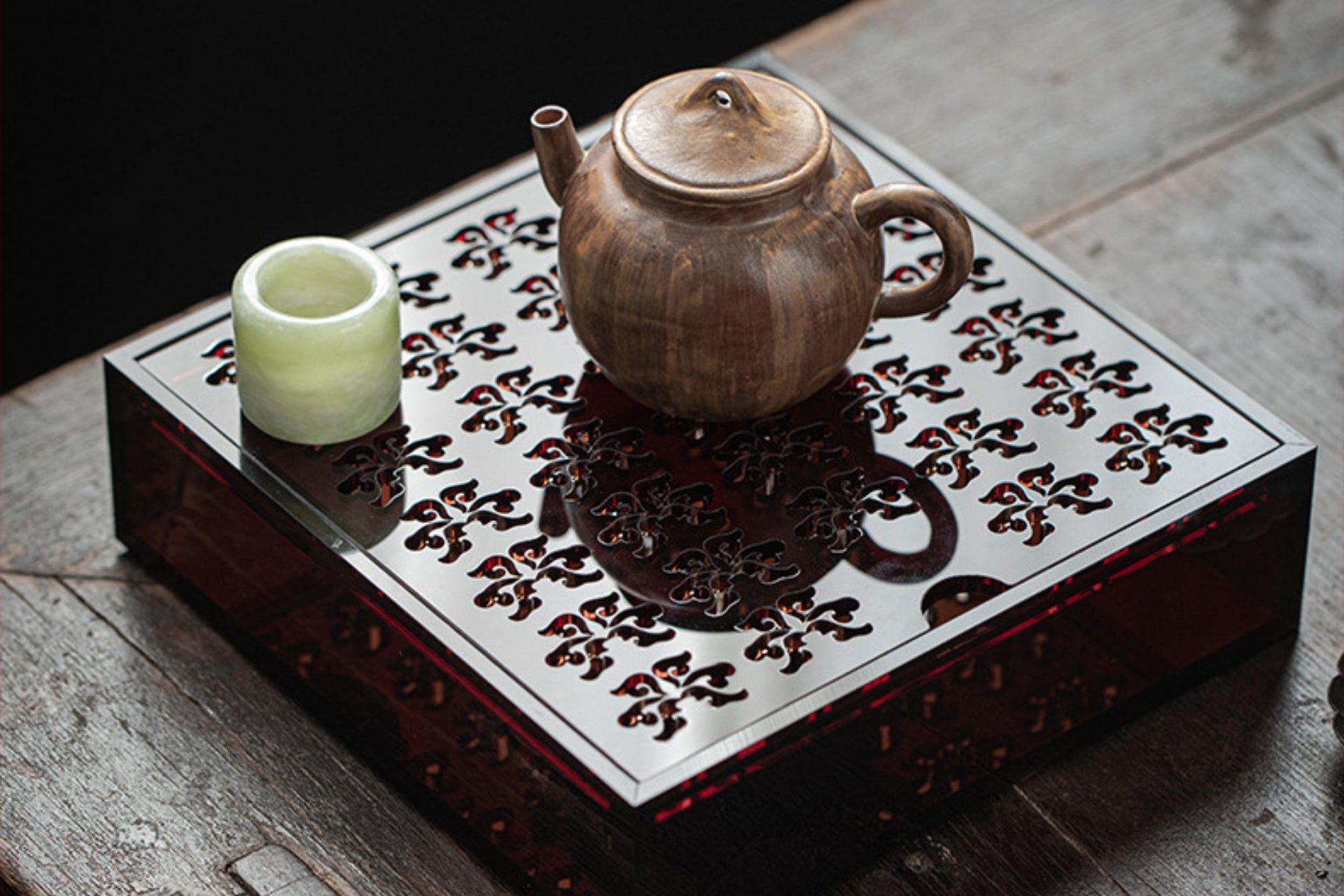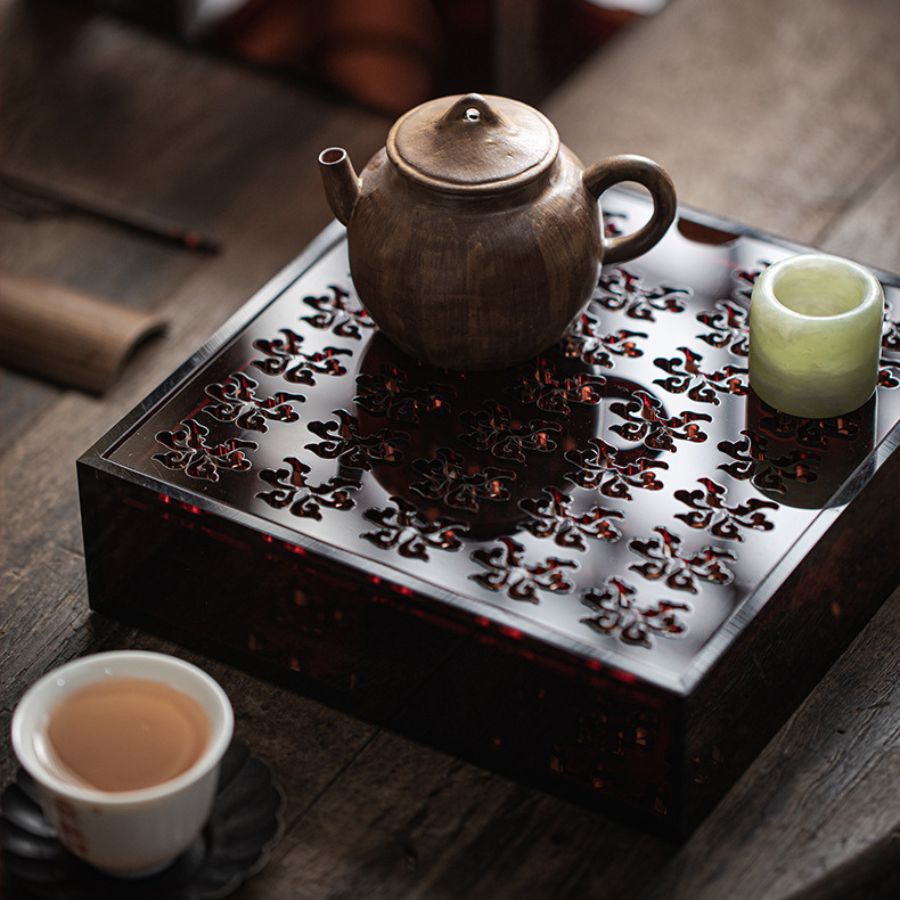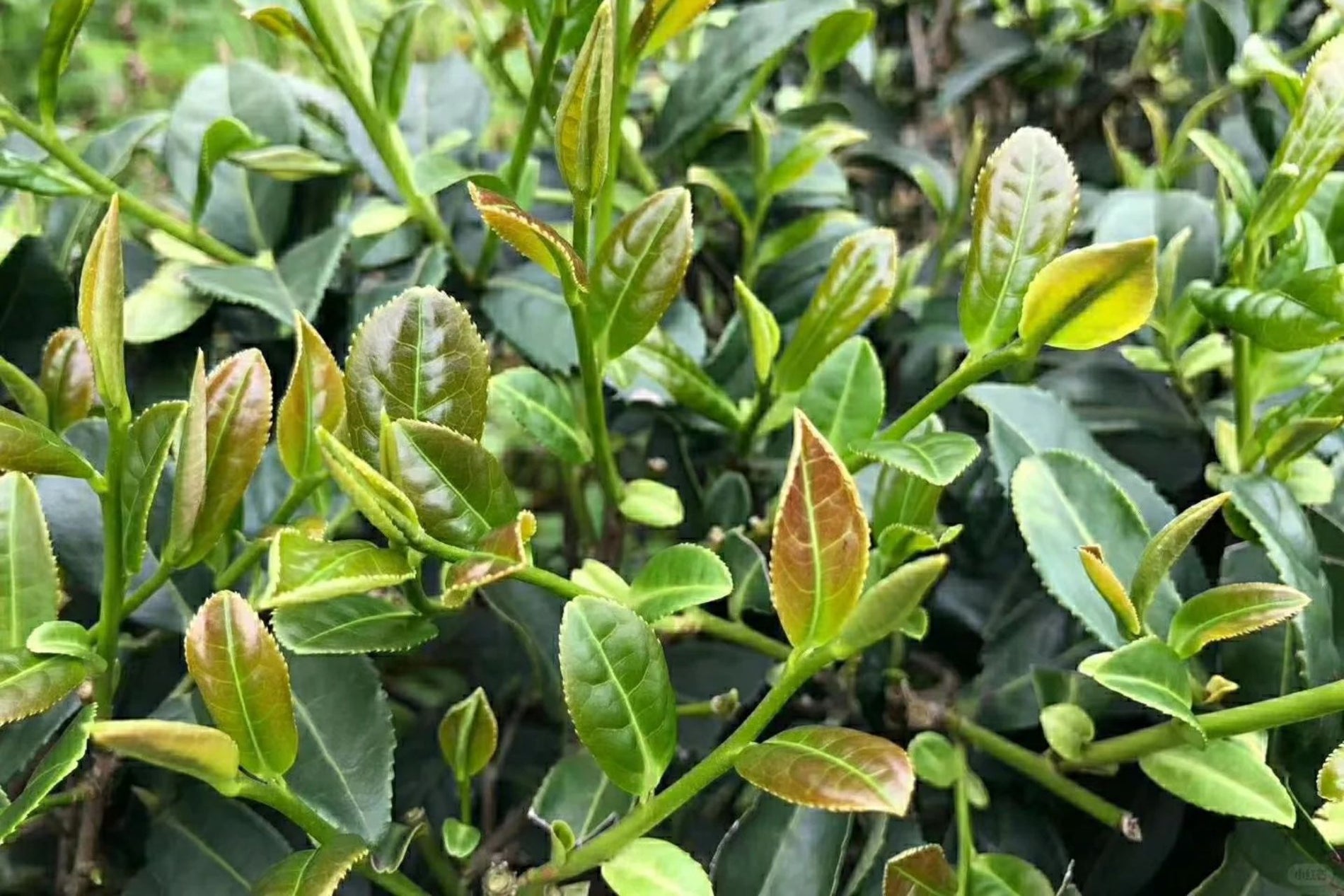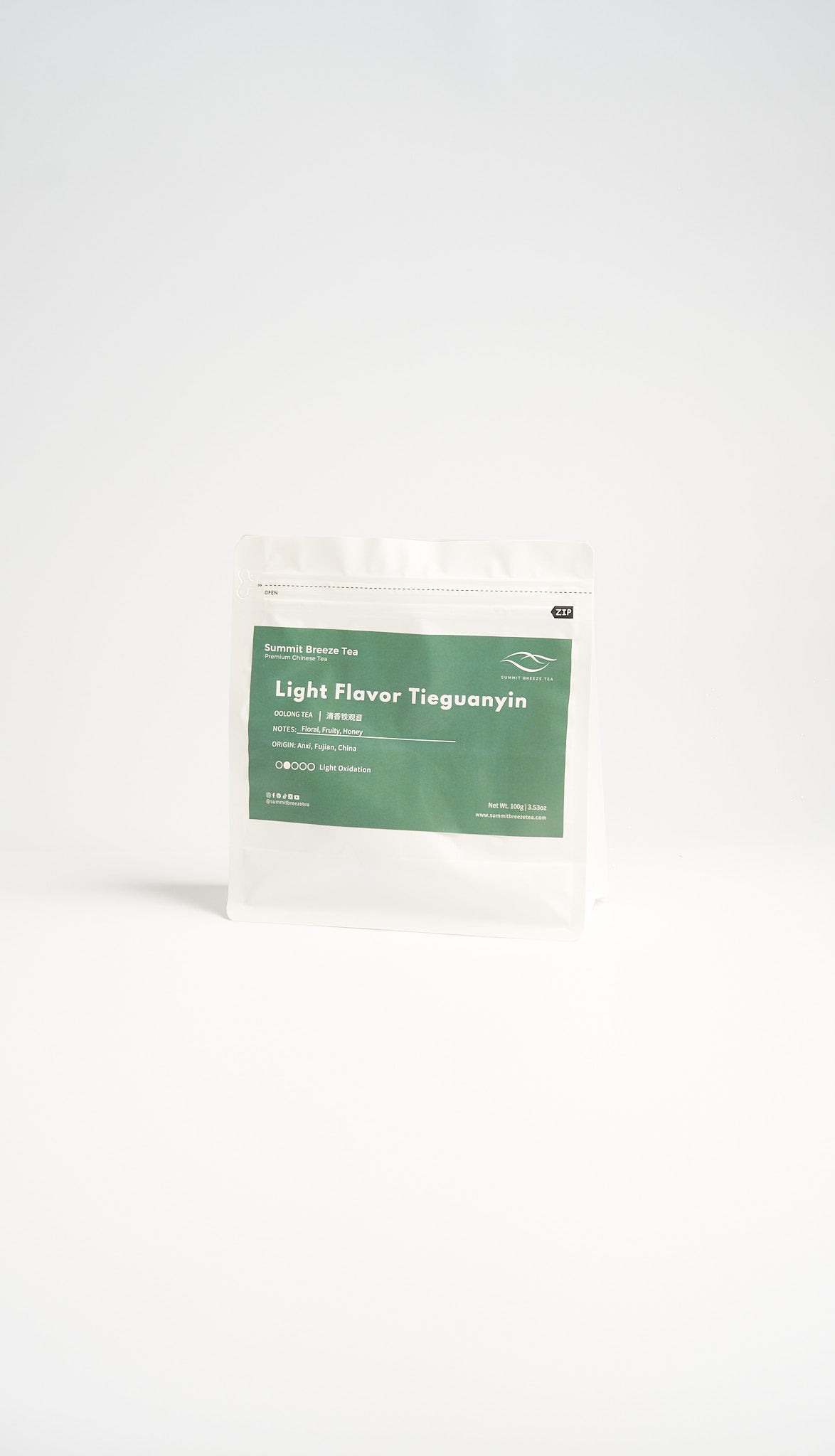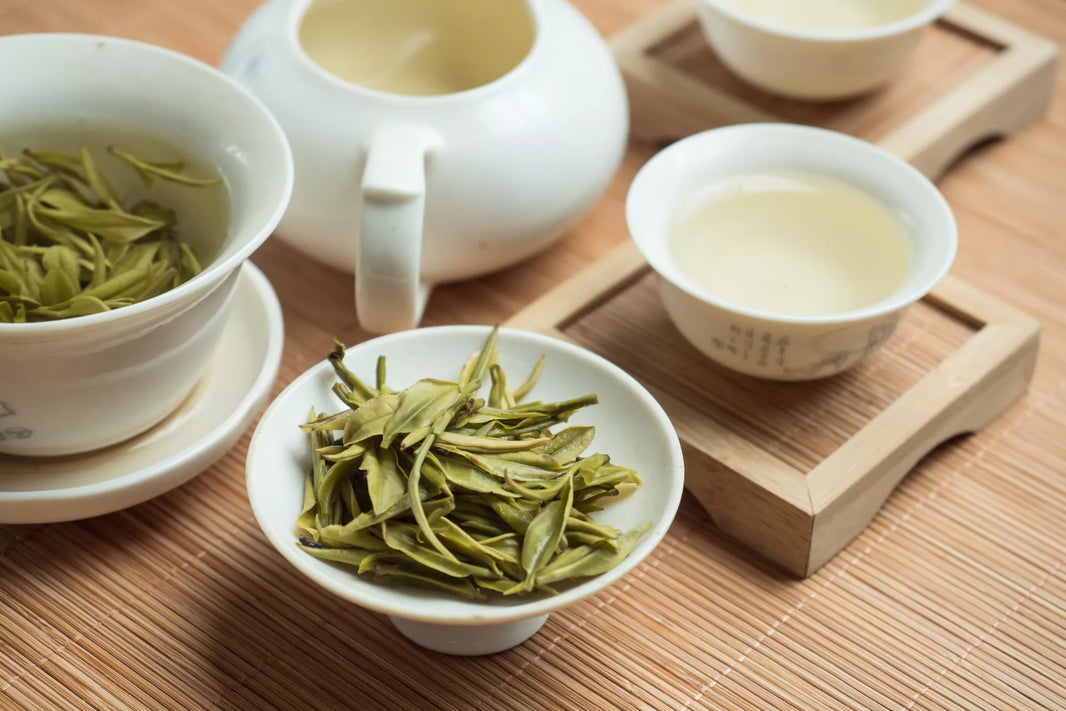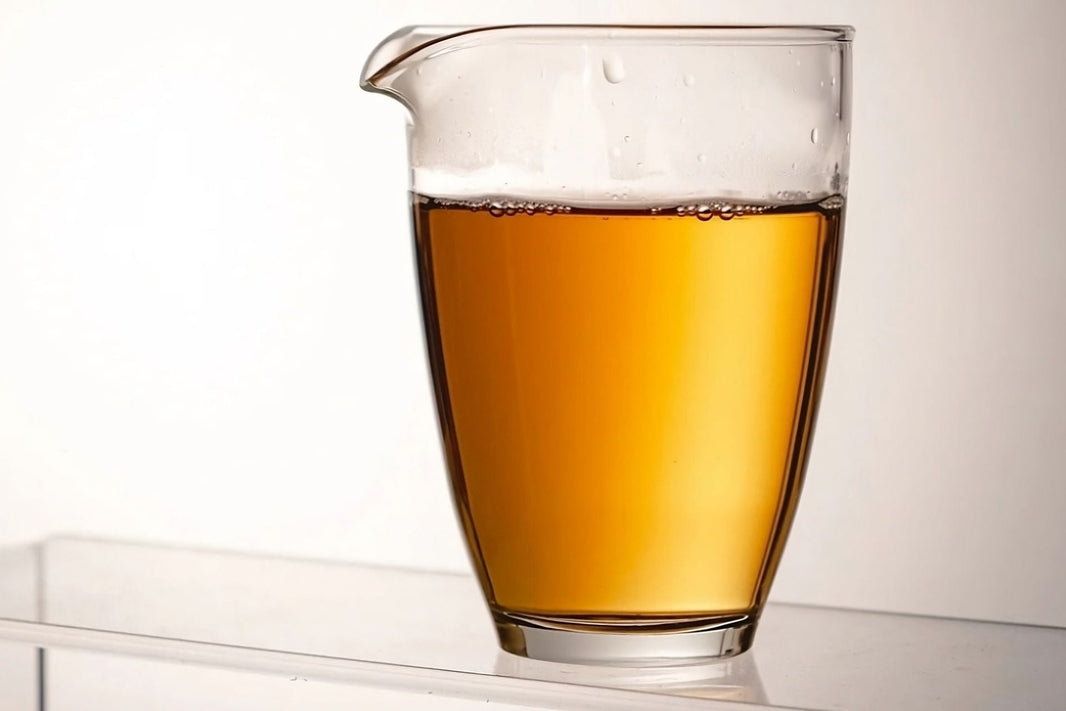Tieguanyin, also known as Iron Goddess of Mercy, is one of the famous Oolong teas in China. It is also called Southern Fujian Oolong. This is because it comes from the southern part of Fujian province.
From around 1910 to 2010, Tieguanyin tea was very popular in China. At that time, people took pride in being able to drink Tieguanyin.
In the north of China, the host would only serve Tieguanyin to entertain special guests. However, Tieguanyin lost its prestige in the Chinese tea market for various reasons.
In the current Chinese tea market, Tieguanyin is not as popular as it was. But, tieguanyin has a long history and orderly inheritance. Anxi, Fujian is the origin of Oolong tea and the most famous area for Tieguanyin.
History of Tieguanyin
Tieguanyin was created during the Qianlong period of the Qing Dynasty. Legend has it that Tieguanyin was offered to Emperor Qianlong.
After evaluating the tea, he found it dark and firm, as heavy as iron. It also had a beautiful aroma and shape. Hence, the name "Tieguanyin" (Iron Goddess of Mercy).
Growing Regions of Tieguanyin
The growing region of Tieguanyin is Anxi County, Quanzhou City, Fujian Province.
Anxi is divided into inner and outer Anxi areas. Inner Anxi is mountainous, mainly with higher altitudes, while outer Anxi is primarily flat.

Varieties of Tieguanyin
Tieguanyin trees fall into two categories. There is the Tieguanyin variety, known as "Red Heart Curly Tail Peach (红芯歪尾桃)."
The other varieties refer to all different types except Tieguanyin. This group includes Benshan (本山), Maoxie (毛蟹), and Huangjingui (黄观音), etc. Other varieties are good too. But, Tieguanyin has the unique "Guanyin Yun" (Tieguanyin charm), orchid scent, and sweet, refreshing tea. They are better than those of other varieties.
Tieguanyin Processing Methods
Tieguanyin processing has modern and traditional techniques. Modern methods are influenced by Taiwanese Oolong, making the tea more like green tea.
Many people in China still think of Tieguanyin as a green tea, although it is actually an Oolong tea. Traditional Tieguanyin leans more towards traditional Oolong tea.
It follows the methods of the 1980s and 1990s in its production and flavor.
Aged Tieguanyin is a strong Tieguanyin that has been aged for many years.

Light Flavor Tieguanyin
Light Flavor Tieguanyin is also known as Qingxiang (清香) Tieguanyin. It is influenced by Taiwanese Oolong and is lightly oxidized.
The leaves are green with red edges removed. The tea is lighter and has a fresh floral aroma. It tastes refreshing. The methods for processing light flavor Tieguanyin include many techniques.
These include zhengwei (正味), xiaozheng (消正), xiaoqing (消青), tuoqing (拖青), tuosuan (脱酸), and tuofu (托脯). They are based on different static times after the final shaking of the tea leaves.
Lighter-flavored Tieguanyin needs vacuum packing. It needs to be stored in the fridge to stay fresh.
Strong Flaver Tieguanyin
Strong Flavor Tieguanyin is known as Nongxiang (浓香) Tieguanyin. It has undergone carbon roasting using modern light fragrance techniques. This means it has been roasted over charcoal, which gives it a lower water content, making it easier to store.
The tea liquor appears golden yellow and is more mellow. Strong flavor Tieguanyin can also be made from traditionally processed light fragrance Tieguanyin through carbon roasting.
Traditional Tieguanyin
Traditional Tieguanyin uses traditional Oolong tea methods. It has tender leaf picking and longer sun exposure. It undergoes more thorough oxidation. This gives it green leaves with red edges and a golden-yellow tea.
The tea has a stronger floral and fruity aroma, best reflecting the "Guanyin Yun" of Tieguanyin. Traditional Tieguanyin has less water. So, it does not need vacuum packaging or refrigeration.
Differences Between Traditional and Modern Tieguanyin
Traditional and modern Tieguanyin differ in fermentation. Modern Tieguanyin has a lighter fermentation. Traditional Tieguanyin has moderate fermentation. This is in line with traditional Oolong tea methods. Additionally, modern Tieguanyin often removes the red edges of the tea leaves. But, traditional Tieguanyin keeps them. Traditional Tieguanyin tea liquor is golden yellow. The light fragrance variety is lighter.

The formation of red edges is due to the collision of fresh leaves during the shaking process. This damages cells at the leaf edges. It promotes the oxidation of polyphenols. As a result, colored substances are produced, creating the red edges.
The Taste of Tieguanyin Oolong Tea
Tieguanyin is a type of Oolong tea with a prominent fragrance, notable for its orchid aroma. It has a refreshing taste with a noticeable sweet aftertaste.
Modern Tieguanyin may have some green flavor. This is due to not fermenting enough, indicating bad processing.
Properly processed Tieguanyin does not have a green flavor and has a mellow taste.
Caffeine Content in Tieguanyin
The caffeine content in Tieguanyin tea ranges from approximately 8.33 mg to 25 mg per 100 ml. The amount of caffeine varies by tea type. It depends on the variety, processing, brewing time, and amount of tea.
How to Store Tieguanyin
If your Tieguanyin is made using modern methods, it has more water. Store it in the fridge's crisper drawer and drink it within the year.
Traditional or carbon-roasted Tieguanyin has less than 6% water. It does not need refrigeration. Store it in a sealed, light-proof container at room temperature.


